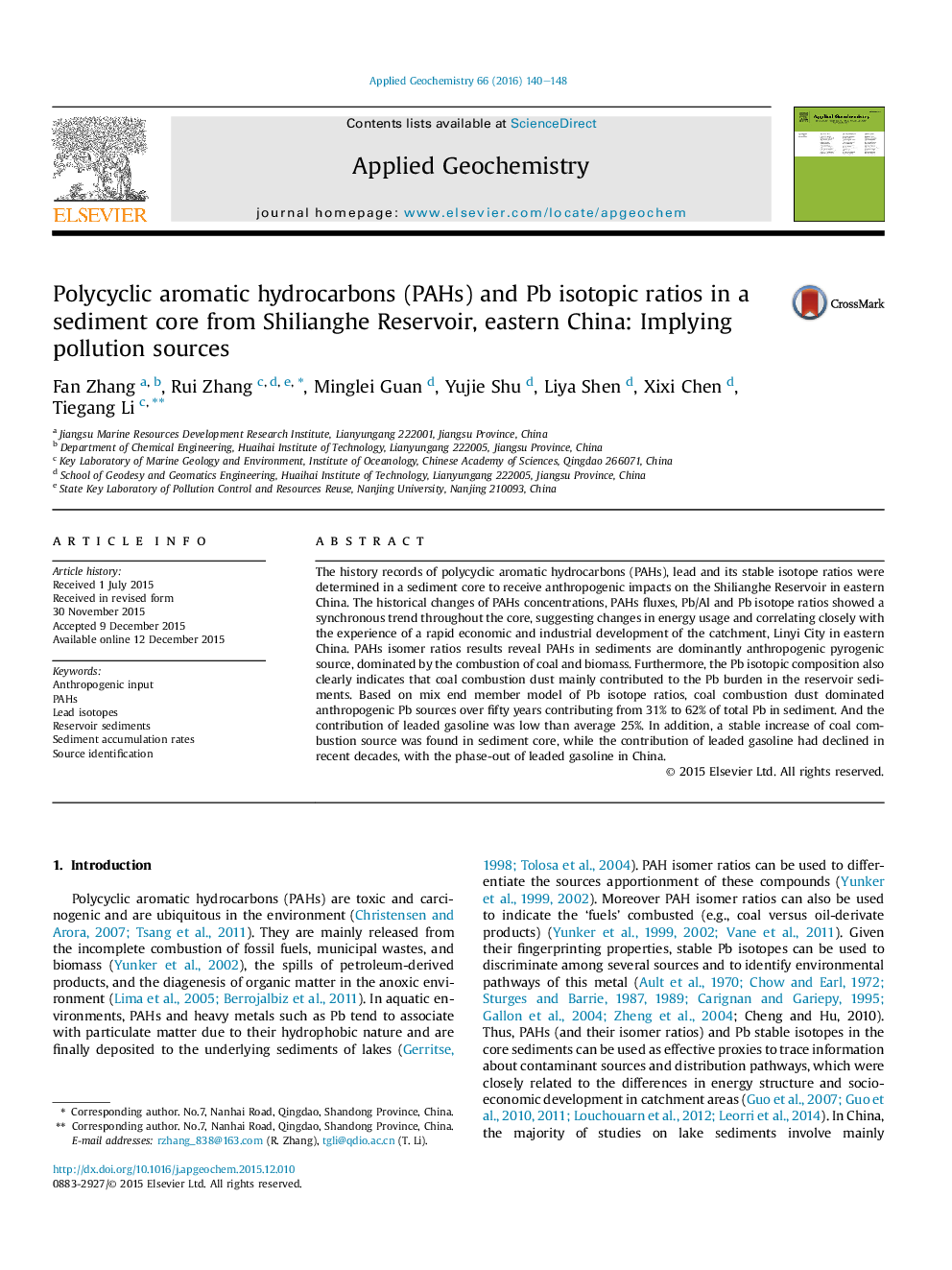| Article ID | Journal | Published Year | Pages | File Type |
|---|---|---|---|---|
| 6334825 | Applied Geochemistry | 2016 | 9 Pages |
Abstract
The history records of polycyclic aromatic hydrocarbons (PAHs), lead and its stable isotope ratios were determined in a sediment core to receive anthropogenic impacts on the Shilianghe Reservoir in eastern China. The historical changes of PAHs concentrations, PAHs fluxes, Pb/Al and Pb isotope ratios showed a synchronous trend throughout the core, suggesting changes in energy usage and correlating closely with the experience of a rapid economic and industrial development of the catchment, Linyi City in eastern China. PAHs isomer ratios results reveal PAHs in sediments are dominantly anthropogenic pyrogenic source, dominated by the combustion of coal and biomass. Furthermore, the Pb isotopic composition also clearly indicates that coal combustion dust mainly contributed to the Pb burden in the reservoir sediments. Based on mix end member model of Pb isotope ratios, coal combustion dust dominated anthropogenic Pb sources over fifty years contributing from 31% to 62% of total Pb in sediment. And the contribution of leaded gasoline was low than average 25%. In addition, a stable increase of coal combustion source was found in sediment core, while the contribution of leaded gasoline had declined in recent decades, with the phase-out of leaded gasoline in China.
Keywords
Related Topics
Physical Sciences and Engineering
Earth and Planetary Sciences
Geochemistry and Petrology
Authors
Fan Zhang, Rui Zhang, Minglei Guan, Yujie Shu, Liya Shen, Xixi Chen, Tiegang Li,
